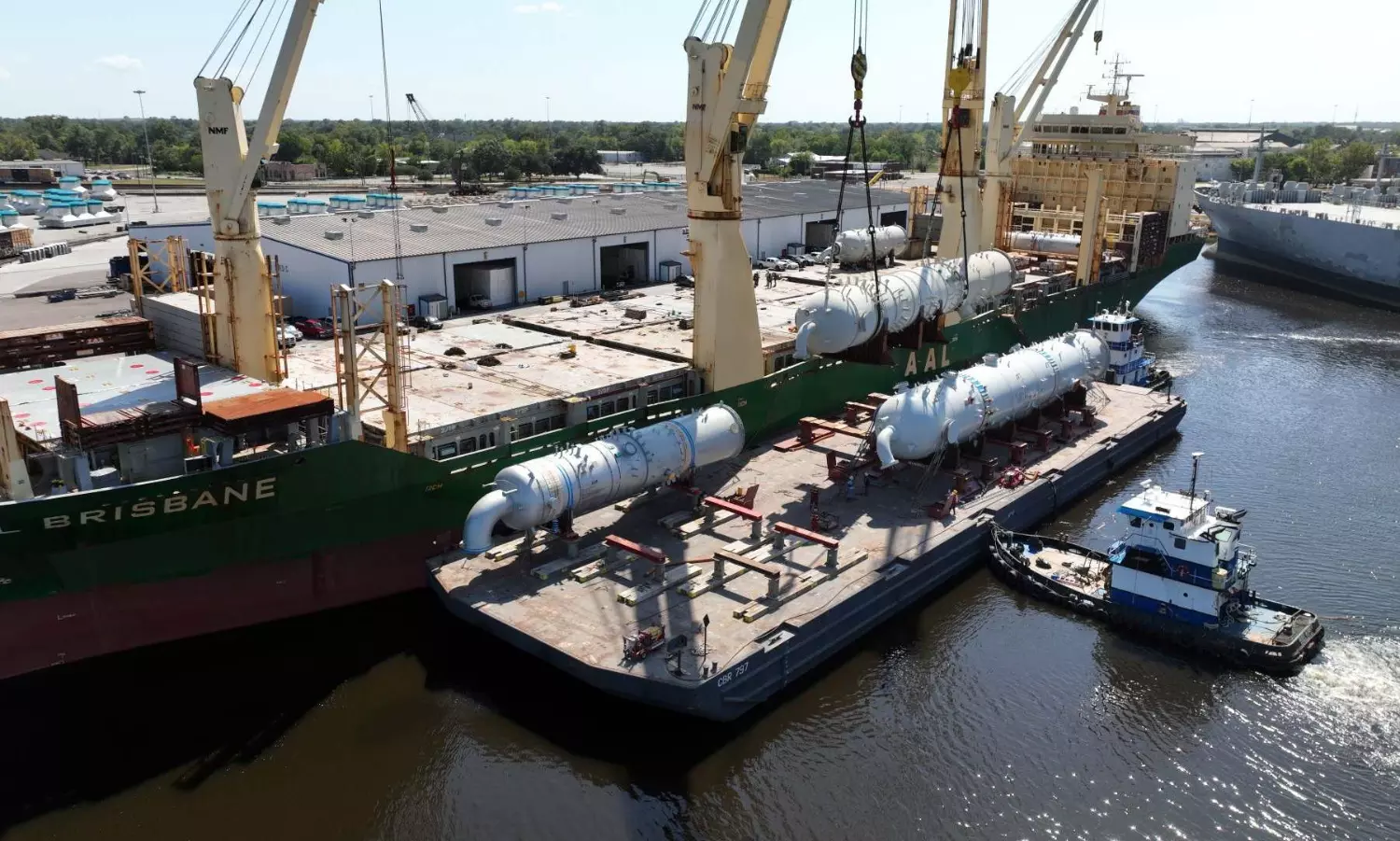AAL moves high-value 12,800-tonne project cargo on Asia-Americas lane
The shipment of LNG cargo included an AGR Absorber that breaks AAL’s record for the heaviest unit ever handled on its Asia-Americas regular trade lane.

Project heavy lift carrier, AAL Shipping (AAL) executed a complex operation to transport over 12,800 freight tonnes (FRT) of heavy lift project cargo from the South Korean ports of Kunsan and Pyeongtaek to Beaumont in Texas – shipped along its in-demand regular ‘Asia to The Americas Trade Lane’ and onboard its 31,000-deadweight heavy lift vessel, the AAL Brisbane. The shipment was part of a major LNG project in the US’s second largest state, Texas.
The high value project cargo will be installed at the LNG facility’s new processing plant. It comprised multiple sized components totalling 12,800 freight tonnes, the largest of which was a 607-metric tonne AGR Absorber that measured just under 39 metres, used to remove H2S, CO2 and other organic sulphurs from raw feed gas. Some of the other large heavy lift units included a 40-metre and 436-metric tonne HP MR Absorber and three Dehydrators, weighing just shy of 200-tonnes each.
Henrik Hansen, General Manager of AAL Americas, commented, “We have a longstanding collaboration with the shippers, having successfully executed several long-haul fixtures for them in the past between Asia and the US Gulf. On this shipment, the largest unit of 607 metric tons was the heaviest piece ever lifted and carried by AAL on our trade lane between Asia and North America.”
He added, “In addition to the heavy lift cargo, this sailing also carried general and project cargoes to other US destinations and for multiple customers representing varied industry sectors. The AAL Brisbane is an A-Class second-generation premium heavy lift vessel, with a lifting capacity of 700 tonnes and cargo intake of 40,000 CBM, and she proved uniquely able to handle this complex shipment.
“From a technical perspective there were multiple challenges and loading such cargo from and discharging to barge is always a precarious process, during which exacting ballast water techniques are deployed to ensure the vessel remains perfectly upright whilst lifting and transferring the largest components. Total time required to discharge in Beaumont was 113 hours, with three and half hours needed just for the largest unit. The operation proved a great success and is down to the dedication of our engineers, ops team and the vessel’s highly experienced crew.”
With an estimated send out capacity of around 18 million tonnes of LNG per year, the facility will create hundreds of direct jobs and enhance US energy security, whilst helping to export clean energy from Texas to the world.


